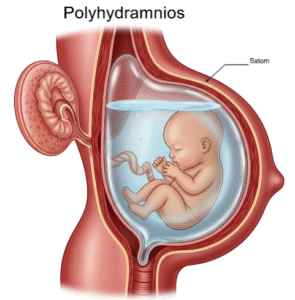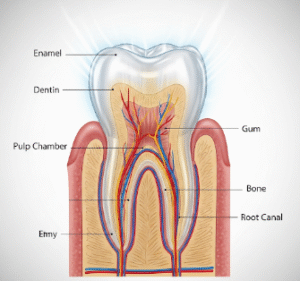Overview
Borderline Personality Disorder (BPD) is a mental health condition characterized by pervasive instability in emotions, self-image, interpersonal relationships, and behavior. Individuals with BPD often experience intense mood swings, fear of abandonment, impulsive actions, and difficulties in maintaining relationships.
In Korea, BPD is diagnosed and treated in psychiatric hospitals, counseling centers, and specialized mental health clinics. Korean mental health care emphasizes psychotherapy, supportive counseling, and medication management, combined with culturally sensitive approaches that consider social and family dynamics. Early diagnosis and intervention are essential for improving outcomes and helping patients lead fulfilling lives.
What is Borderline Personality Disorder?
BPD is a personality disorder, meaning it affects the patterns of thinking, feeling, and behaving over time. It is distinct from mood disorders such as depression or bipolar disorder, although symptoms may overlap.
Key features include:
- Emotional instability: Rapid mood changes and intense emotional reactions
- Interpersonal difficulties: Fear of abandonment, unstable relationships, and idealization/devaluation cycles
- Impulsive behaviors: Risky activities, self-harm, or substance misuse
- Distorted self-image: Chronic feelings of emptiness or unstable sense of identity
- Cognitive distortions: Paranoia or dissociation during stress
BPD typically manifests in late adolescence or early adulthood, though patterns may be noticeable earlier. Early intervention and ongoing treatment are critical to manage symptoms and improve functioning.
Symptoms
Symptoms of BPD are diverse and affect multiple aspects of life:
- Emotional symptoms: Intense sadness, anger, anxiety, or irritability lasting hours to days
- Interpersonal symptoms: Difficulty trusting others, frequent conflict, fear of rejection
- Behavioral symptoms: Impulsive spending, reckless driving, binge eating, substance abuse
- Self-harm and suicidal behavior: Cutting, burning, or suicide attempts are common
- Cognitive symptoms: Transient paranoia, dissociation, or feeling disconnected from reality
- Identity disturbance: Unstable self-image, chronic feelings of emptiness, difficulty making decisions
Symptoms often worsen during periods of stress, conflict, or perceived abandonment.
Causes
The exact cause of BPD is multifactorial, involving genetic, environmental, and neurobiological factors:
Genetic factors:
- Family history of BPD or other personality disorders
- Heritability of emotional regulation difficulties
Environmental factors:
- Childhood trauma, abuse, or neglect
- Unstable family environment
- Early loss or separation from caregivers
Neurobiological factors:
- Brain structure and function differences affecting emotion regulation and impulse control
- Imbalance in neurotransmitters such as serotonin and dopamine
Risk Factors
- Family history of BPD or other mental health disorders
- Childhood trauma or abuse: Emotional, physical, or sexual
- Early loss of a parent or caregiver
- Exposure to unstable or chaotic family environment
- Genetic predisposition affecting emotional regulation
- Personality traits: High sensitivity, impulsivity, or difficulty managing stress
Complications
BPD can lead to significant personal, social, and occupational challenges if untreated:
- Self-harm or suicidal behavior: High risk compared to the general population
- Substance abuse: Alcohol or drugs as coping mechanisms
- Relationship difficulties: Repeated conflicts, breakups, or isolation
- Employment challenges: Difficulty maintaining consistent work due to impulsivity or emotional instability
- Co-occurring mental health disorders: Depression, anxiety, eating disorders, or PTSD
- Chronic feelings of emptiness or low self-worth
Prevention
While BPD cannot be completely prevented, early recognition, intervention, and supportive environments can reduce severity:
- Early mental health screening for at-risk adolescents
- Supportive family and social environment to enhance resilience
- Trauma-informed care for children with adverse experiences
- Education on emotional regulation and coping strategies
- Access to counseling and therapy for early signs of personality instability
- Stress management and mindfulness practices
Treatment Options in Korea
Diagnosis
Diagnosis involves comprehensive psychiatric evaluation:
- Clinical interviews: Assess history of symptoms, behaviors, and relationships
- Psychological assessments: Standardized questionnaires such as the Borderline Personality Disorder Severity Index (BPDSI)
- Medical evaluation: Rule out other mental or physical conditions
- Observation of patterns: Long-term monitoring of emotional, cognitive, and behavioral patterns
Psychotherapy
Psychotherapy is the primary treatment for BPD in Korea:
- Dialectical Behavior Therapy (DBT): Focuses on emotional regulation, mindfulness, distress tolerance, and interpersonal effectiveness
- Cognitive Behavioral Therapy (CBT): Helps identify and change maladaptive thought patterns
- Schema Therapy: Addresses deep-rooted patterns from childhood experiences
- Mentalization-Based Therapy (MBT): Enhances understanding of self and others’ mental states
- Group therapy: Provides peer support and social skill development
Medication
No medication specifically cures BPD, but medications can alleviate symptoms:
- Antidepressants: Treat depression, anxiety, or mood swings
- Mood stabilizers: Reduce impulsivity and emotional instability
- Antipsychotics: Manage transient psychotic-like symptoms or severe mood dysregulation
Medication is often combined with psychotherapy for best results.
Supportive Care
- Family education and counseling to improve understanding and reduce conflicts
- Crisis intervention services for self-harm or suicidal behavior
- Mindfulness, yoga, and stress reduction techniques to enhance emotional stability
- Occupational therapy or vocational support to improve workplace functioning
- Regular follow-up: Ongoing monitoring to prevent relapse and manage comorbidities
Prognosis
With consistent, comprehensive treatment, individuals with BPD can experience symptom reduction and improved quality of life:
- Long-term psychotherapy can significantly reduce self-harm and emotional instability
- Early intervention leads to better social and occupational outcomes
- Supportive family and social networks enhance treatment adherence and coping
- Korean mental health care emphasizes culturally sensitive approaches, improving accessibility and effectiveness
- Many patients achieve functional stability, maintain relationships, and lead productive lives













